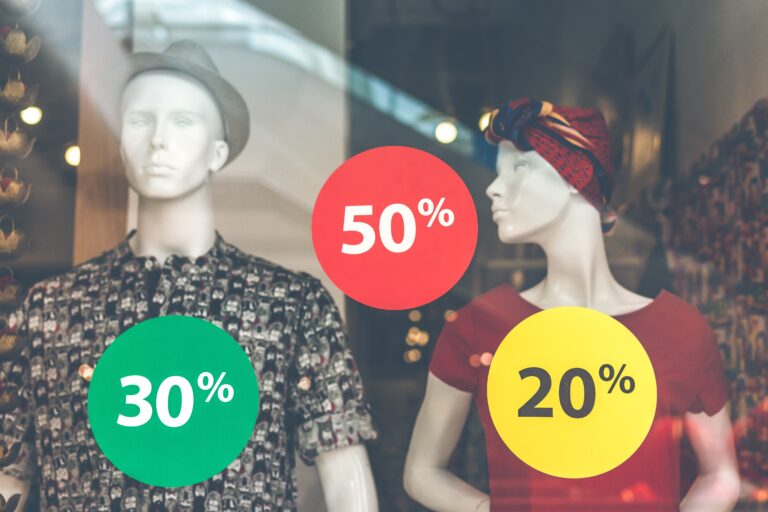By Dan Surtees, Vice President of Strategy & Business Development, XCCommerce
Most industries have suffered throughout the pandemic but some have suffered more than others and the retail industry is absolutely one of the industries hit the hardest.
Overall sales have dropped across the board – from $5.47 trillion USD in 2019 to less than $5 trillion USD in 2020 and just over $5 trillion USD in 2021 – and according to a recent survey of the retail industry, 60% of consumers are spending less on retail due to the pandemic. These drops in sales are resulting in an alarming rate of store closures, as retail vacancy rates surged from around 9% in 2019 to 20% in 2020.
So how can retailers bring back the customers they have lost and reverse the troubling trend we are witnessing?
Many are turning to slashing prices across the board in an effort to draw back the customers they so desperately need. And while consumers’ desire for discounts is clear – with 56% of those surveyed in the previously mentioned study saying that discounts will be the most important factor when determining where to shop – doing so without any sort of strategy or direction will reduce your margins to practically nothing.
Complex offers and promotions of value
Rather than simply providing discounts without any sort of proper strategy or purpose, retailers need to instead focus on providing consumers with promotions that are of real value to them.
A sophisticated promotion management solution to not only design and implement your complex promotions, but also to manage them at every step along the way, can free up your staff for the issues that require human attention.
Changes in consumer behaviors/expectations
As the world of retail has changed over recent years, so too have consumer behaviors and expectations.
For example, 32% of those surveyed indicated that they now spend more time researching discounts and promotions than they did a year ago, compared to only 8% who say they now do less research, and those consumers – especially the younger segments of the consumer population – are now seeking those discounts in a different format than before, such as through push notifications from a retailers app (24%), through SMS messages from retailers (20%), and via TV advertisements (21%).
And these changes in behavior and expectations are unlikely to stop anytime soon. As a result, retailers need the applications they use to be able to adapt quickly to any further changes in consumer behaviors and still be able to deliver what retailers need to have a competitive edge.
If retailers continue to use technology that is unable to adapt, they will be unable to keep pace.
Changes in technology
While the pace of change for consumer behaviors and expectations are ever changing, so too is the technology being used in the retail industry.
Business is being done on more channels than ever and through a wider range of access points (traditional shopping, e-commerce, using an in-store terminal, etc.) than at any point in history.
For example, while we are all likely aware of the surge in e-commerce, recent years have also seen a surge in m-commerce (purchases made on mobile devices) as it soared from under $1 trillion USD in global m-commerce sales in 2016 all the way up to $3.56 trillion USD in 2021. More broadly, in 2021, 73% of consumers are using multiple channels to shop in a single purchase.
Retailers can account for this by finding a promotion management solution that is agile and flexible; allowing it to adapt to the numerous changes we’re experiencing in the market.
That agility and flexibility will also allow retailers to integrate with the other solutions they need; for example, integrating with CRM to harness the swaths of consumer data in a system to create truly customized offers and promotions for individual customers.
Individualized offers specifically are a major expectation of consumers, with 62% of those surveyed stating a desire for them.
Automation Gives Retailers Control and ROI
Automating the core elements of a promotions system requires fewer resources and frees people to deliver more value to an organization and ultimately customers. ROI is sustainable because it is driven by cost reductions and the ability to grab market opportunities at greater speed, so that retailers can fund activities that drive revenue and increase their competitiveness.
With better insight on key data and the effectiveness of promotion campaigns, retailers can reduce promotions dependency over time, allowing them to develop new programs to drive long-term customer loyalty and sales by giving customers what they want.
About the author
 Dan Surtees is Vice President of Strategy and Business Development for XCCommerce. XCCommerce is the industry leader in promotion management and execution, helping the world’s foremost brands drive growth and customer loyalty. For 20 years, XCCommerce has delivered retailers an Omni-Channel customer experience, with the power and speed to manage, execute and analyze complex promotional offerings, across all sales channels.
Dan Surtees is Vice President of Strategy and Business Development for XCCommerce. XCCommerce is the industry leader in promotion management and execution, helping the world’s foremost brands drive growth and customer loyalty. For 20 years, XCCommerce has delivered retailers an Omni-Channel customer experience, with the power and speed to manage, execute and analyze complex promotional offerings, across all sales channels.
Related Articles

7 Employee Benefits That Can Help Your Business Increase Staff Retention
With so many businesses vying for the attention of skilled job candidates, it’s becoming more important to look for ways to make your offerings more appealing by adding unique perks that not every employer does.

How Retailers Can Prepare for the Summer 2025 Shift
Rather than focusing on isolated touchpoints or departmental KPIs, journey management provides a way to understand where the most critical pain points lie and how to resolve them systematically across the business.

Retailers Are Drowning in Data – Journey Management Could Be the Lifeline
Rather than focusing on isolated touchpoints or departmental KPIs, journey management provides a way to understand where the most critical pain points lie and how to resolve them systematically across the business.

How Entertainment is Shaping the Future of Retail Spaces
The traditional retail anchor is being redefined. Large department stores once dominated most shopping centers. Now, concepts like food halls, upscale restaurants, immersive cinema experiences and gaming venues are taking center stage.



 for the latest news and job opportunities in retail tech
for the latest news and job opportunities in retail tech 